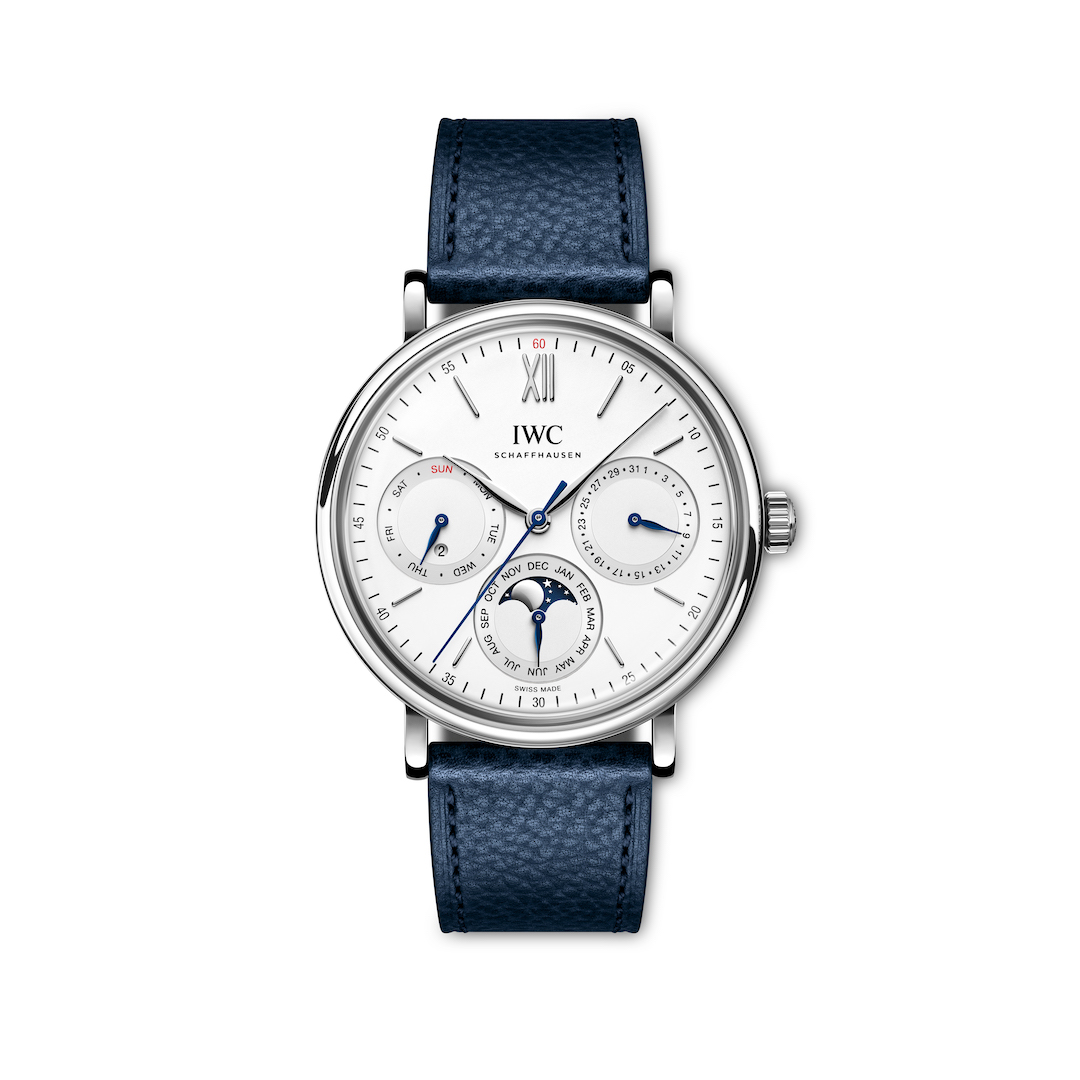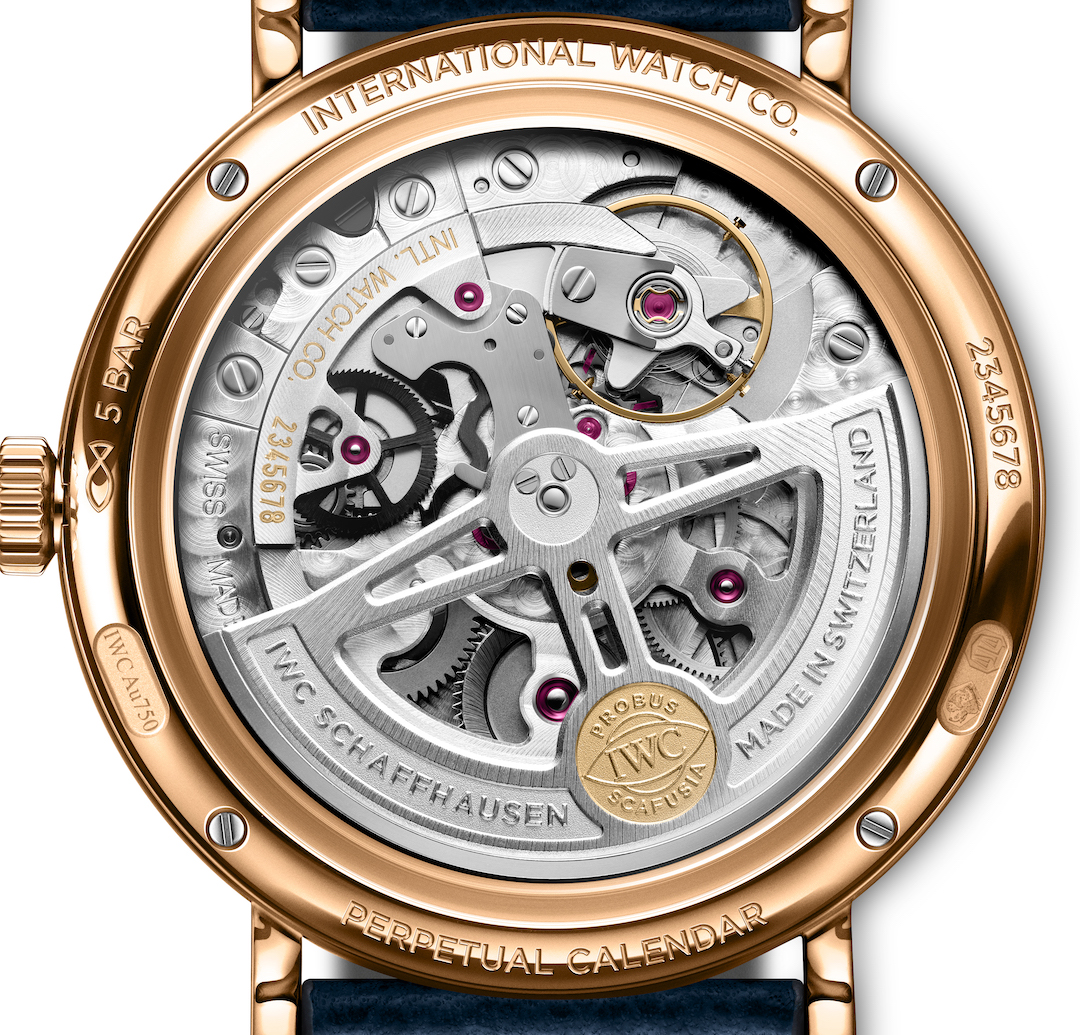
IWC Portofino Perpetual Calendar in 18-karat 5N rose gold.
I’ve been in the watch industry a very long time. In fact, I started my journey in late 1984 and my first full year in timepieces was in 1985. That was the same year that IWC unveiled its revolutionary DaVinci Perpetual Calendar watch that had been developed over the course of several years by master watchmaker Kurt Klaus – a man considered a legend for the brand today. The perpetual calendar displays the date, day of week, month, moonphase and year in four digits – and runs without needing a correction until the year 2499.
Keep in mind this was decades before today’s nanotechnology came into play and the making of that highly complicated watch was no easy feat. The calendar, which is comprised of 100 parts, is incredibly user friendly. Its mechanical programming recognizes and accounts for different lengths of the months, including leap years. The perpetual calendar has since become a beloved staple in the IWC lineup.

IWC Portofino Perpetual Calendar in stainless steel.
Unfortunately, it has been quite some time since watch lovers have witnessed the complication in the beloved Portofino collection – until now. IWC is offering two truly sophisticated renditions of the IWC Portofino Perpetual calendar watch. It will run without needing an adjustment util the year 2100 – when the leap year that is supposed to occur will be skipped in order to keep the Gregorian Calendar synchronized to real time.
What makes the new Portofino Perpetual Calendar so exceptional is the fact that it is the smallest and thinnest watch of its kind to date. The watch measures 40mm in diameter – making it the smallest IWC perpetual calendar on the market.

IWC Portofino Perpetual Calendar is powered by an in-house-made automatic movement with moon phase accurate for nearly 600 years.
The Portofino Perpetual Calendar is powered by the 82650 movement with automatic Pellaton winding system, ceramic components and 60 hours of power reserve. Additionally, there are two renditions, one in 5N 18-karat rose gold and the other in stainless steel – making it the first-ever Portofino with perpetual calendar in steel. The moonphase indication is so accurate that it will only deviate by one day in 577.5 years.
The 40mm watch is a perfect fit for all sized wrists and it is sold with straps made of traceable Swiss calf leather. A tour around the dial showcases the date at 3:00, the month at 6:00 and the day of the week at 9:00. Reminiscent of the concept of displaying leap year indication, a red “L” signals leap year. The moon phase showcases the moon against a night sky filled with stars. Again, that precisely mechanized gear train deviates by just a single day from Earth’s orbit every 577.5 years.
The complicated timepiece is water resistant to 50 meters and boast a see-through sapphire caseback for viewing of the finely finished movement. The stainless steel version retails for $24,000, while the 18-karat gold watch sells for $33,500.





